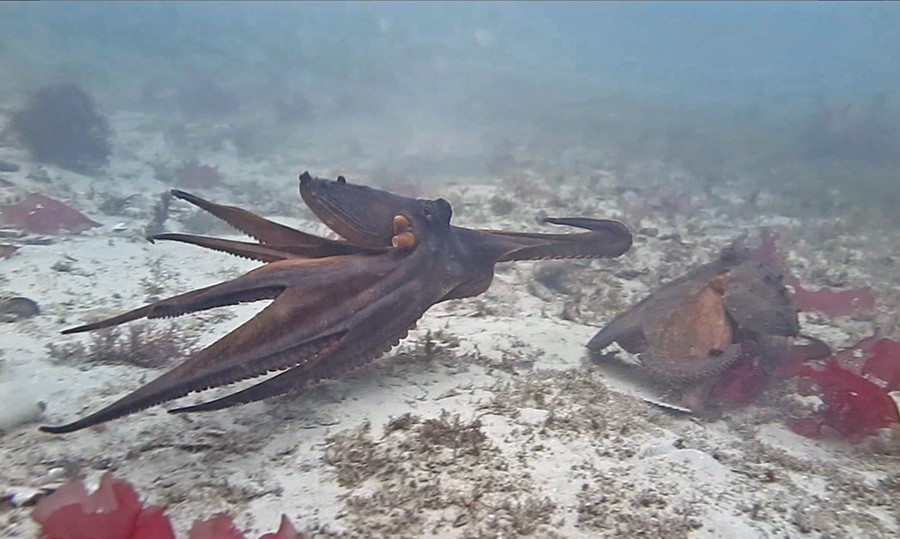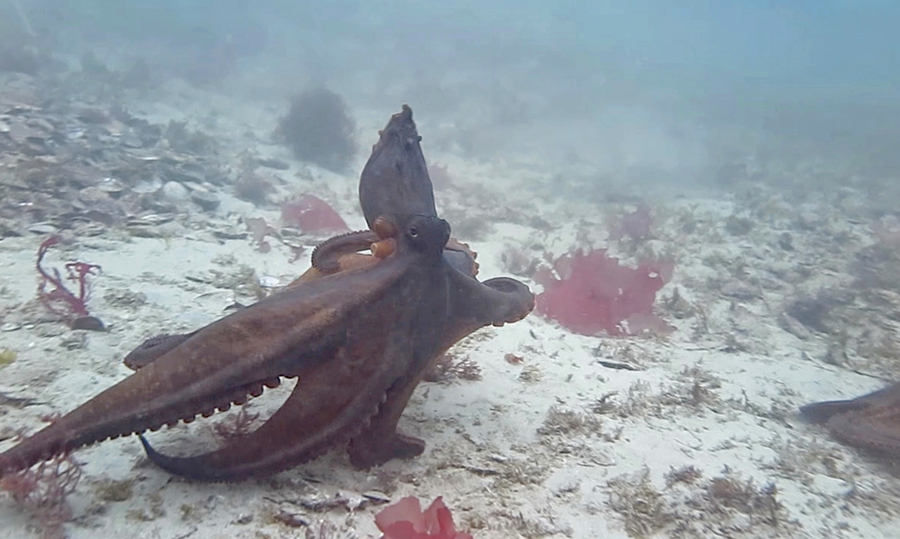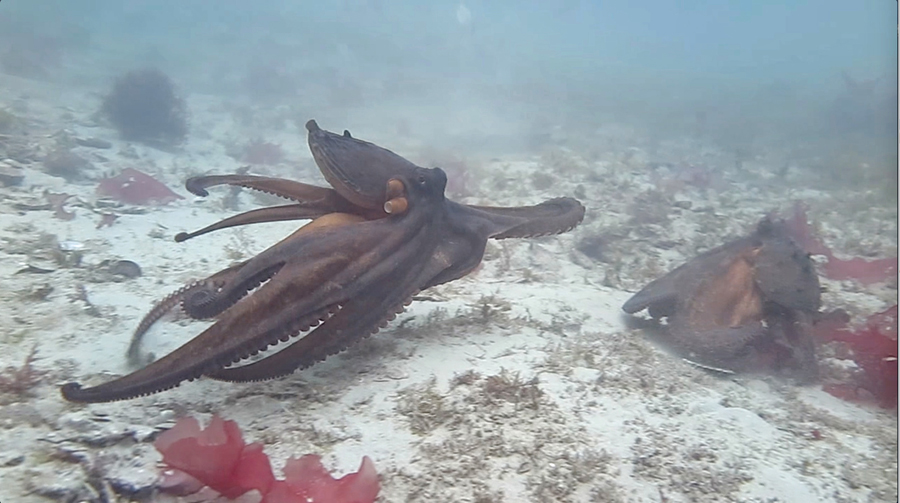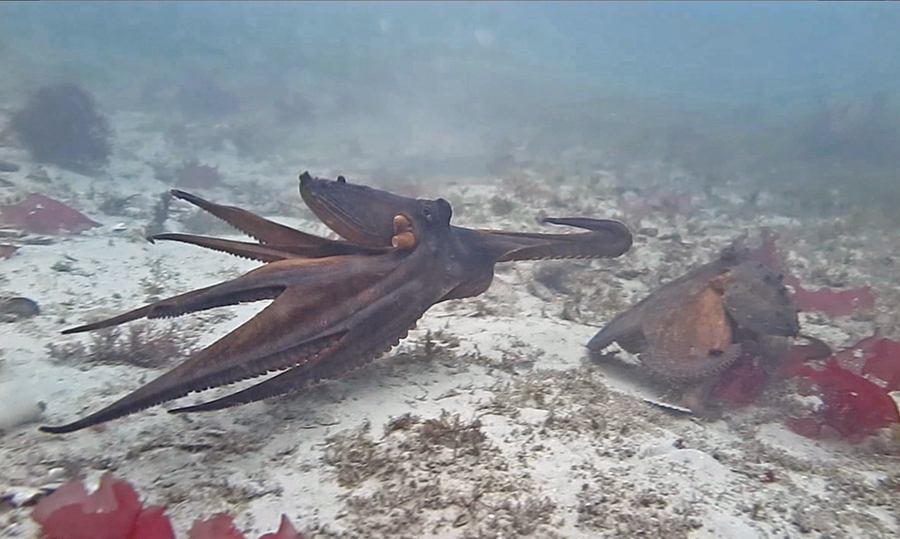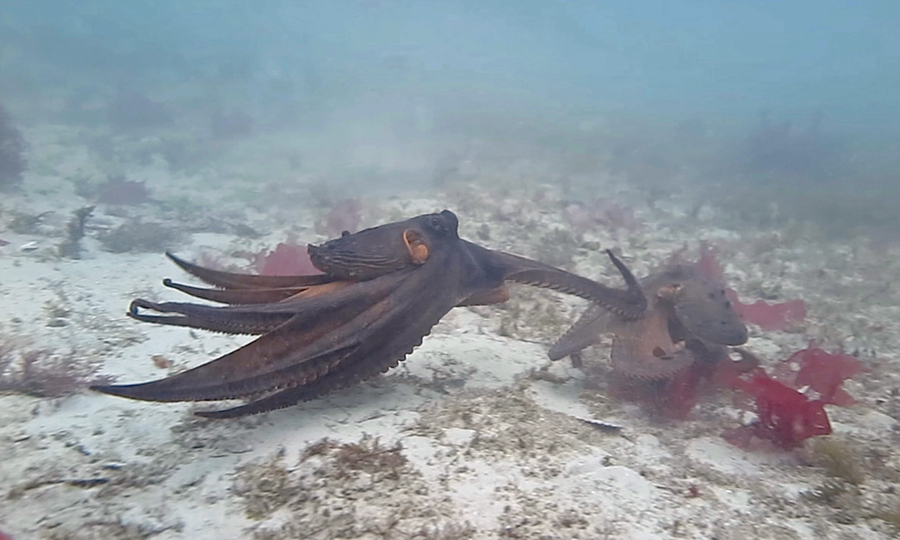The photo is a video screenshot of an octopus reaching for another during a chase. This is a color version of the shot on page 68 of Other Minds, where it’s part of a discussion of the mixed and entangled way that octopuses seem to control their bodies.
An octopus has a large brain, but about two thirds of its neurons are spread through the body, especially in the arms. At talks and events I’ve done about Other Minds over the last month, this mix of centralized and decentralized control in octopuses has been something a lot of people have asked about and explored. Do the arms of an octopus have a degree of autonomy? To what extent can the brain tell an arm exactly where to go? In the book I discussed experiments bearing on this question, and also used the image above as an anecdotal illustration of what seems to be top-down control; the octopus apparently directs a single arm at a target, in a deliberate way, with the others trailing behind as it jets.
Here’s a series of photos that give the details of this act, a series of screenshots from the same video, with the contrast increased to make details clearer. In the first, the octopus starts to move towards another on the right, and the arm that will eventually reach out is visible just as a bulge on the center-right of the animal:
Now it starts to extend:
It’s the “first left” arm of the eight. The first right arm, adjacent to it, is on the ground and may perhaps be doing some bracing, to facilitate the reach.
The arm stretches out with a cocked temporary “elbow” about half-way along:
The next in the sequence is the shot at the top of the post and in the book…
… and then the arm lands on its target.
The “elbow” stays bent as the arm lands; there’s no whip-like extension of the temporary joint. Perhaps, then, the term “elbow” is not so apt. The fold in the arm might be there to enable the animal to bring a relatively firm and rigid part of the arm down on its foe, rather than the more pliable (and perhaps delicate) tip. If so, what I called the formation of a temporary elbow might be better seen as the making of an octopus fist.
______________
Notes: I’ve been doing radio interviews and podcasts about Other Minds. One is here. I mention this particular one because the person on the show just before me is Simon McBurney, who wrote and presents a one-man theatre piece called The Encounter, which I saw in New York last month. The Encounter is a sonic-telephathic-Amazonian marvel. If you ever get a chance to see this extraordinary show, don’t miss it.

